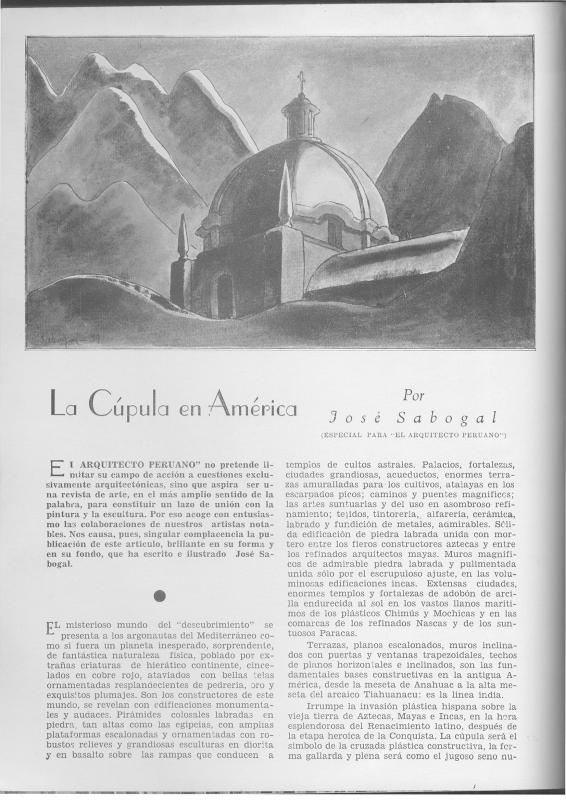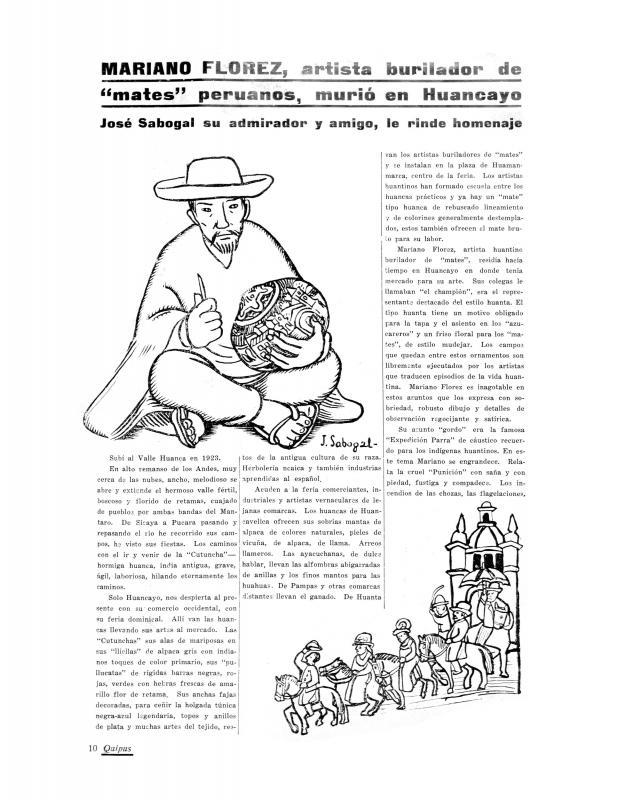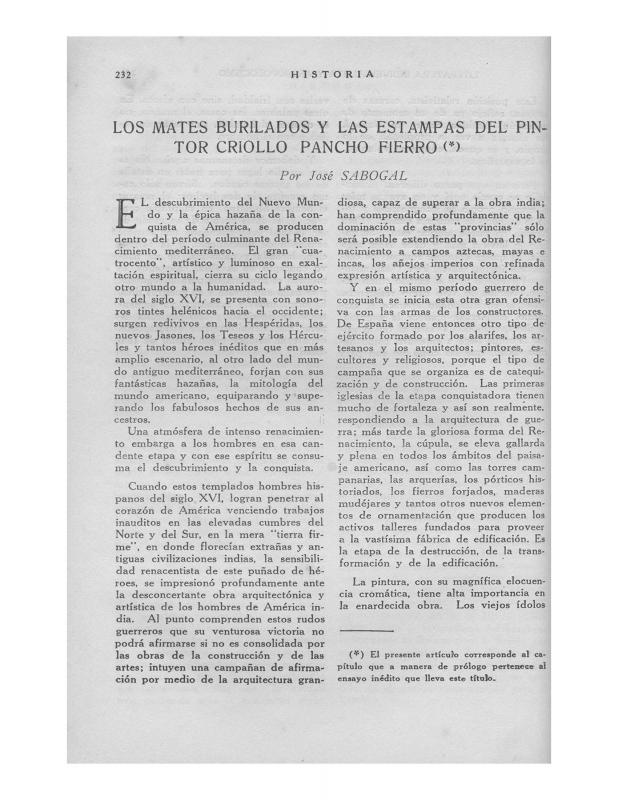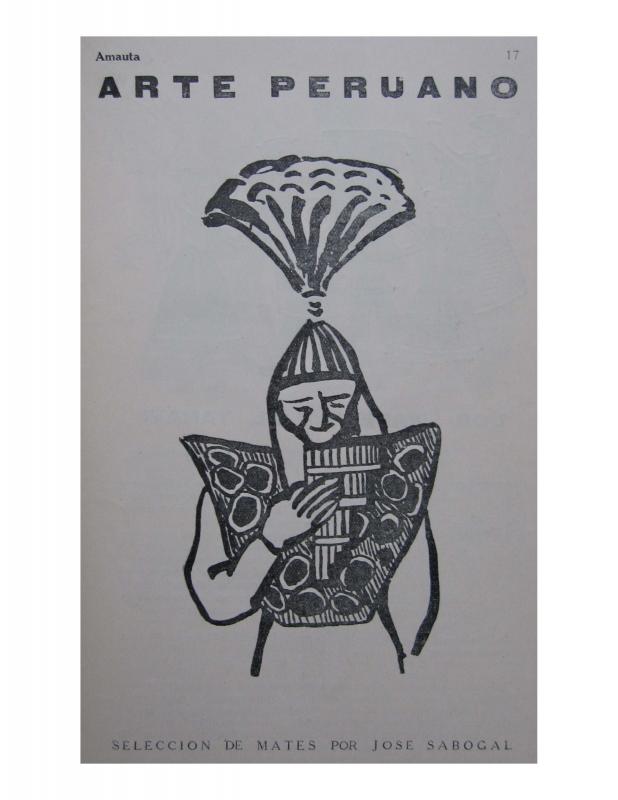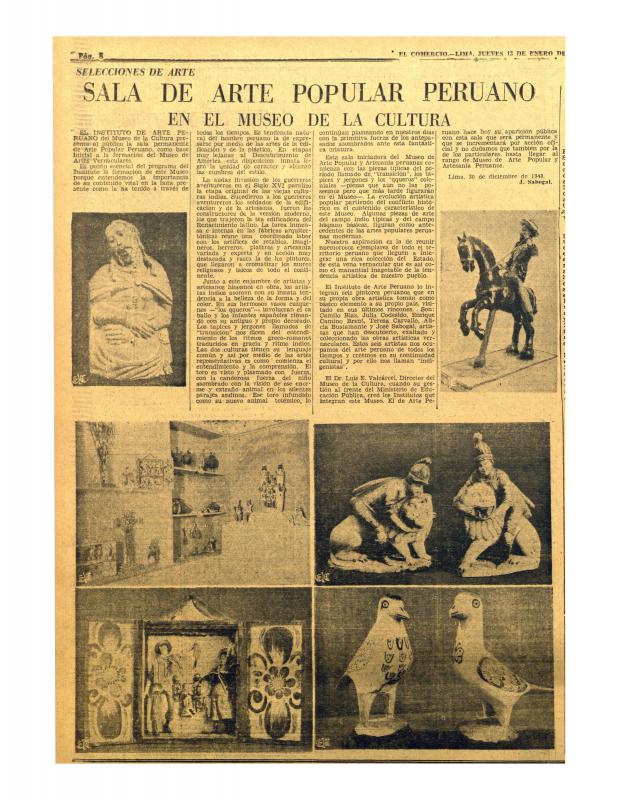The author of this article, Mercedes Gallagher, wrote reviews about Peruvian art and music, which she contributed to publications such as Mundial, Variedades, Social, Mercurio Peruano, and La Prensa. She also published important essays in which she analyzed different aspects of art, such as "Shadows on the Road" (1935), "La realidad y el arte. Estudio de estética moderna" (1937), "La escultura popular y costumbrista en piedra de Huamanga" (1942), and "La mentira Azul" (a compilation of her essays from 1948). Her critical opposition to indigenism is clear in several of her articles, this one in particular: “Sobre el problema indigenista en nuestra cultura” (Mercurio Peruano, Lima, October 1939). Indigenist painting flourished in Peru from the 1920s to the 1940s as part of a broader movement that sought to redefine Peruvian identity in terms of indigenous elements. Although at some points it was entirely focused on the “indigenous” story and the glorious Inca past that also championed a mestizo identity portrayed as a result of the integration of “native” and “Hispanic” cultures. The main ideologue and unchallenged leader of the Indigenist movement in the visual arts was José Sabogal (1888–1956), whose profound interpretation of the concept of “being rooted” was deeply influenced by regional art movements in Spain (exemplified by Ignacio Zuloaga [1870–1945], among others) and in Argentina (Jorge Bermúdez [1883–1926], to mention just one); Sabogal spent a great deal of time in these countries during his formative years. When he returned to Peru in late 1918, he settled in Cuzco where he produced about forty oil paintings of people and scenes of the city; these works were subsequently shown in Lima (1919) at an exhibition that is considered the formal beginning of Indigenist painting in Peru. Sabogal’s second solo exhibition at the Casino Español (1921), established his reputation. In 1940, Sabogal exhibited twenty-five works (oil paintings, watercolors, ink drawings, and a fresco) at the Lima Country Club. Most of the works were painted between 1938 and 1940, and he included, for the first time, a few that he had painted in Arequipa. The exhibition took place at a time when opposition to indigenism had consolidated, although Sabogal maintained his leadership in local art circles through the Escuela Nacional de Bellas Artes. [There are many articles about this artist in the ICAA digital archive, including the following written by Sabogal: “Arquitectura peruana: la casona arequipeña (doc. no. 1173340); “La cúpula en América” (doc. no. 1125912); “Mariano Florez, artista burilador de "mates" peruanos, murió en Huancayo: José Sabogal su admirador y amigo, le rinde homenaje” (doc. no. 1136695); “Los mates burilados y las estampas del pintor criollo Pancho Fierro” (doc. no. 1173400); “Los 'mates' y el yaraví” (doc. no. 1126008); “La pintura mexicana moderna” (doc. no. 1051636); and “Sala de arte popular peruano en el Museo de la Cultura : selecciones de arte” (doc. no. 1173418)].


